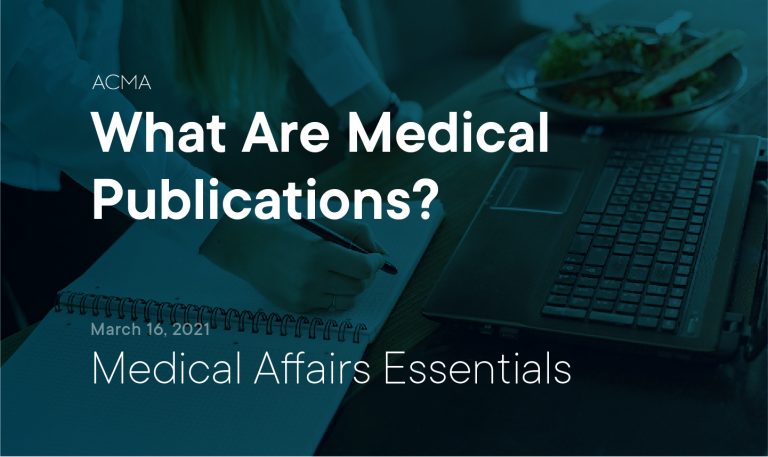What is a Medical Science Liaison (MSL)?
A medical science liaison (MSL) refers to a field-based medical affairs professional whose primary responsibility is to interact with influential healthcare providers (HCPs) who are on the forefront of their relative therapeutic specialties. Life sciences companies - pharmaceutical, biotechnology, medical devices - all employ medical science liaisons in similar roles.
Companies typically align the medical science liaison role by therapeutic area, such as oncology, cardiology, immunology, etc. Therapeutic area alignment allows medical science liaisons to build relationships with HCPs who specialize in the diseases that the company’s products treat.
The Origin of the Medical Science Liaison Role

The story of how Medical Science Liaisons (MSLs) came to be is well known throughout the pharmaceutical industry. In 1967, Upjohn Pharmaceuticals (now Pfizer) recognized the need for scientifically trained field staff that would be able to build rapport with Key Opinion Leaders (KOLs) in various therapeutic areas of research.
To have more meaningful interactions with these external experts (EEs) and other healthcare providers, Upjohn Pharmaceuticals needed field representatives to establish relationships with leading medical professionals. The company initially identified sales representatives who demonstrated strong scientific knowledge and could bring a higher degree of clinical and educational expertise to the medical professionals with whom they were working.
And so, the first Medical Science Liaison team was formed
Over the next 25 years, medical science liaison teams became more popular primarily among pharmaceutical companies. In the 1990s, as commercial sales forces expanded in size, medical science liaison teams went through a slow and steady expansion.

Once the industry adopted the original PhRMA code of conduct in 1999, and subsequent government agencies - such as the Office of Inspector General (OIG) - published their own guidelines for industry representatives interacting with medical professionals, sales force expansion slowed. Medical science liaison teams, however, have expanded since the turn of the century. The expansion of field-based medical science liaison teams continues today.
Although originally called medical science liaisons by Upjohn, over the years and today, companies have used various names for the role including:
Medical Liaisons
Medical Managers
Regional Scientific Managers
Clinical Liaisons
Scientific Affairs Managers

All of these various titles are basically synonymous with the medical science liaison role. The common thread connecting all of these titles is that the role requires medically trained employees to work in the field communicating with healthcare professionals. That medical training sets the medical science liaison role apart from other field-based professions within life sciences.
Although the medical science liaison role has evolved, this community is still small compared to other professions within the pharmaceutical industry. However, there has been an exponential growth of the role over the last several years. According to a recent benchmark study, among top ten U.S. pharmaceutical companies, the MSL role has grown by an average of 300% in the last decade.
What Educational Background is Required to become a Medical Science Liaisons?
For many years, pharmaceutical companies filled their medical science liaison positions with scientific-minded sales representatives. But those days are long gone. The compliance landscape has shifted and companies want to minimize risk by hiring highly educated professionals who can communicate with healthcare providers on a peer-to-peer level.

A peer-to-peer exchange operates within the safeguards of disseminating information to healthcare providers. Additionally, the MSL position has become so competitive that companies now choose among hundreds of doctorate level candidates to fill these roles.
Life sciences companies have staffed their medical science liaison teams with individuals from various scientific backgrounds including: sales reps, those with nursing backgrounds, those with various doctoral degrees or other clinical backgrounds. However, the required educational and scientific background as well as the medical science liaison’s purpose has progressively changed over the years since these roles first came into existence.
Companies now require medical science liaisons to possess advanced scientific degrees, often doctorates (MD, PhD, PharmD, DO). Although, historically, the educational standard in the industry did not require medical science liaisons to have a doctorate degree, today the doctorate has become the educational standard in the industry for the MSL role. In fact, according to one benchmark study, more than 90% of current MSLs hold a doctorate degree.
The ability for a medical science liaison to form a peer-to-peer relationship with a thought leader is better facilitated when they have similar degrees and educational backgrounds. And medical affairs directors also believe that key opinion leaders recognize the difference between medical science liaisons with and without advanced degrees due to the depth and quality of their interactions.
In short, it’s the difference between Ms. Anderson or Dr. Anderson walking through the door. Therefore, the common educational background for today’s medical science liaisons is a doctorate degree.

What is the Medical Science Liaison Job Description?
For several reasons, the medical science liaison role has become essential in the current pharmaceutical industry landscape. Medical science liaisons provide both a broader and more in-depth response to physicians’ questions compared to a sales rep. Medical science liaisons’ job responsibilities can be segmented into research- and education-related activities.
Research activities often include:
Educational activities comprise:
Attending medical meetings, conferences, symposia
Delivering scientific or clinical presentations
Educating KOLs and other HCPs
Attending advisory board meetings
Medical science liaisons are scientific experts to internal colleagues at companies. One of the primary areas of focus for the MSL role is to establish and maintain peer-peer relationships with leading physicians, also referred to as external experts or thought leaders.

Medical science liaisons may also engage in some managed care activities, such as clinical presentations to formulary committees and provide similar support. Other activities often include sales education/training, mentoring, and professional development.
A medical science liaison’s activity priorities can shift according to product lifecycle. The ratio of research- to education-based activities for a developing product will be different from activities for a marketed product or for a mature product nearing patent expiration.
It’s always helpful to get the liaison’s point of view about their activities. You can view a sample medical science liaison resume at LiveCareer.com.
Why It’s Important for Medical Science Liaisons to Talk to KOLs?
MSLs provide the crucial link between the pharmaceutical company and the key opinion leaders. Specifically, they are able to straddle the line between the medical community and the pharmaceutical business. At the same time, a medical science liaison is both the voice of the company to the healthcare provider and the voice of the healthcare providers to the company.

The most influential opinion leaders have achieved their status based on their past achievements. Therefore, when approaching prospective thought leader candidates, medical science liaisons must focus their interactions on the science behind the products. By doing so, the MSL provides physicians the opportunity to advance research within the given therapy area.
The interaction between a medical science liaison and a key opinion leader is based on value. The MSL needs to deliver value, otherwise the KOL will view the meeting as a waste of time. But also, the medical science liaison is looking to gather insights from the KOL interaction to bring back to the company. The value of these insights is in their impact on strategic decision making. Medical affairs teams, and even commercial teams, take insights from the field to help make critical decisions and shape direction.
What is the salary range for Medical Science Liaisons?
One of the attractive reasons that makes the medical science liaison role so competitive is that it’s a well-paid position in medical affairs.
A medical science liaison’s base salary typically starts above $120,000, even at smaller pharmaceutical and biotech companies. But base salaries can easily climb to $200,000 at some companies.
Because companies exclude MSLs from typical sales-based bonus incentives, their base salary is high to reflect the field work that they do. Companies typically offer fixed bonuses for their medical science liaisons. These bonuses often represent approximately 20% of an MSL’s base compensation.
Small- and mid-sized pharmaceutical companies may attract qualified candidates by offering higher base salaries, career advancement opportunities and an entrepreneurial environment. Large pharmaceutical companies are able to offer MSL candidates a stable program infrastructure, more manageable geographies and established support functions, such as training.

Given the growth trend of medical science liaison programs throughout the industry, the competition for candidates with the desired trio of a scientific doctorate degree, interpersonal skills and demonstrable experience makes this role so competitive.


